Owning a home is a worthwhile investment. More than just a comfortable and safe space to enjoy all of life’s endeavours, you can tap into your home’s value.
A reverse mortgage and home equity line of credit (HELOC) allow you to unlock the equity in your home, but choosing the right option matters. Each comes with its advantages and drawbacks.
Reverse mortgages are ideal for older adults (55+) looking to supplement their income without monthly repayments. HELOCs cater to people seeking accessible, flexible funding.
Working with a reputable mortgage broker can help you find the option that aligns with your needs, life stage, and current finances.
What Is a Reverse Mortgage?
A reverse mortgage lets Canadian homeowners 55 years or older borrow against their home’s equity without the obligation of making monthly payments. Instead, homeowners repay this loan when they sell the property, move out, or pass away.
The option can offer retiree homeowners a solution that provides a steady income stream without selling their home.
The benefits of a reverse mortgage include:
- No monthly payments
- No need for monthly payments on the home until it sells
- Steady cash flow
- Receive your funds as a lump sum or in regular installments
- Stay in your home
- You can continue living and owning your home
- Tax-free funds
- Funds received through a reverse mortgage are generally tax-free
Although the benefits are very appealing, a reverse mortgage comes with a few limitations:
- Potentially higher costs
- Reverse mortgages often have higher interest rates & fees
- Reduced equity
- Over time, the loan reduces the equity in your home
- Eligibility
- Homeowners 55 years or older can qualify
What Is a HELOC?
A home equity line of credit (HELOC) allows you to borrow against your home’s equity up to a preset limit. It operates similarly to a credit card, where you can withdraw funds as needed and repay them on a flexible schedule.
The difference lies in its accessibility; a HELOC provides ongoing access to credit as long as you don’t exceed your limit, making it suitable for ongoing financial commitments or investments.
A HELOC offers several advantages, including:
- Flexible repayment
- You only pay interest on the amount you use, not the full amount available
- Lower interest rates
- Generally lower interest rates than credit cards or unsecured loans
- Access to funds as needed
- Draw funds as needed rather than receiving a lump sum
- Potential for investment
- A HELOC can fund renovations to increase your home’s value
With any financial decision, there are some drawbacks to consider, even with HELOCs:
- Monthly payments
- Borrowers must make interest & principal payments regularly
- Variable interest rates
- Variable interest rates can lead to payment increases
- Eligibility
- Requires strong credit, a solid income, & sufficient home equity
HELOC vs. Line of Credit: Are They the Same?
A HELOC is a type of line of credit, but they are not the same, mainly because of a HELOC’s specificity.
HELOCs are a secure line of credit against your home’s equity. You can borrow funds up to a percentage of your home’s value, with the home serving as collateral.
A general line of credit, on the other hand, may be either secured or unsecured and does not necessarily require collateral such as property.
Also, HELOCs typically offer lower interest rates than an unsecured line of credit because the property is collateral for lenders.

Reverse Mortgage vs. HELOC: Key Differences
Although both financial pathways share similarities, highlighting certain features can help you decide which option aligns with your financial goals.
Eligibility
Here are the key differences in eligibility:
- Only homeowners aged 55 & older are eligible for a reverse mortgage
- A HELOC has no age requirement, but you need a strong credit score & steady income
Repayment
Repayment is significantly different:
- HELOCs require monthly payments on interest & principal
- Reverse mortgages are repaid with your home sale, including moving out or passing away
Receiving Funds
How funds are received:
- You get a lump sum or installments with a reverse mortgage
- You access a line of credit as needed with a HELOC
Interest Rates
- Interest rates on a reverse mortgage are generally higher
- HELOCs typically have a lower interest rate
Ideal Use
The ideal use of these options also varies. Generally:
- A reverse mortgage can benefit retirees looking for long-term financial stability
- A HELOC can offer people of any age flexible, short-term funding
Who Can Benefit Most from a Reverse Mortgage?
Reverse mortgages can benefit older Canadians who want to increase their cash flow while remaining in their long-term homes.
It can help cover living expenses, home modifications for accessibility, or other needs during retirement without taking on additional monthly financial obligations.
Who Can Benefit Most from HELOCs?
HELOCs are typically a better fit for those looking for a flexible line of credit to manage their financial goals.
You might find the ability to withdraw and repay funds as needed incredibly useful if you’re looking to expense a home renovation, cover educational costs, or even consolidate high-interest debt.
Reverse Mortgage vs. A Line of Credit
A line of credit is another way to access your home’s equity, but it differs from a reverse mortgage.
Only homeowners 55 and older qualify for a reverse mortgage, allowing them to borrow against their home’s value without committing to monthly repayments. The loan is repaid only when the homeowner sells the property, moves out, or passes away.
A traditional line of credit is a more general option available to a wider range of people. It allows borrowers to access a pre-approved credit limit that can be used, repaid, and reused as needed.
Unlike a reverse mortgage, a line of credit requires regular monthly interest payments, and in some cases, principal. A line of credit can benefit people confident in their ability to manage ongoing payments.
Invest in Trusted Advice
Reverse mortgages and HELOCs are both ways to unlock your home’s value. The right option depends on your financial situation and goals.
Navigating finances and real estate to find your best option can be complex. Working with a trusted mortgage broker helps simplify this process and support your long-term goals.
Our Mortgage Connection team is here to help you unlock the value of your home. Contact us for an initial consultation.




